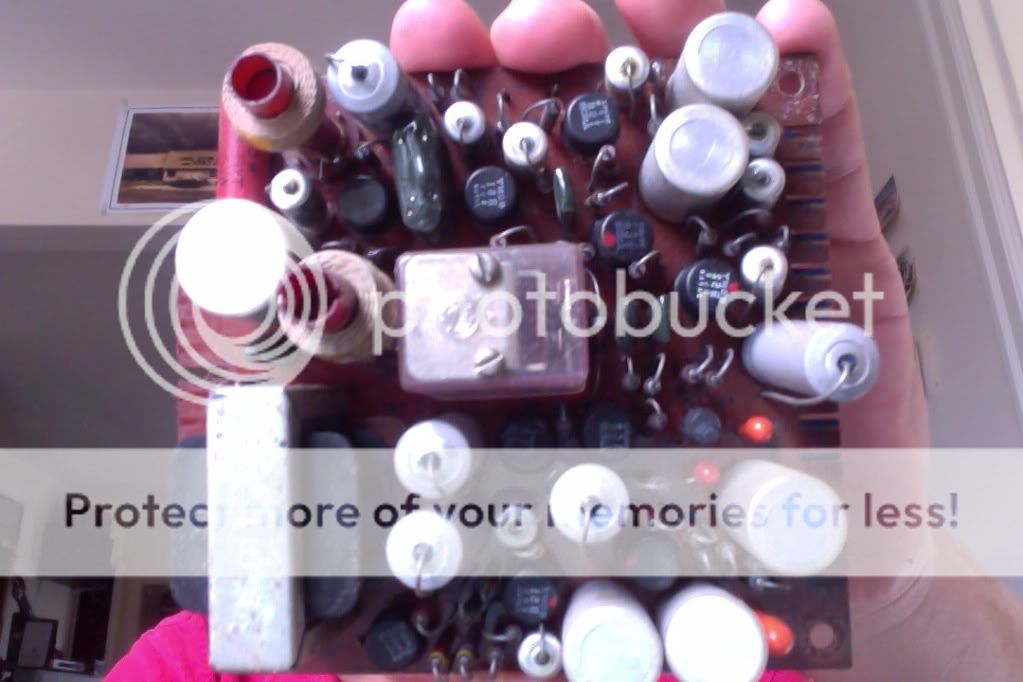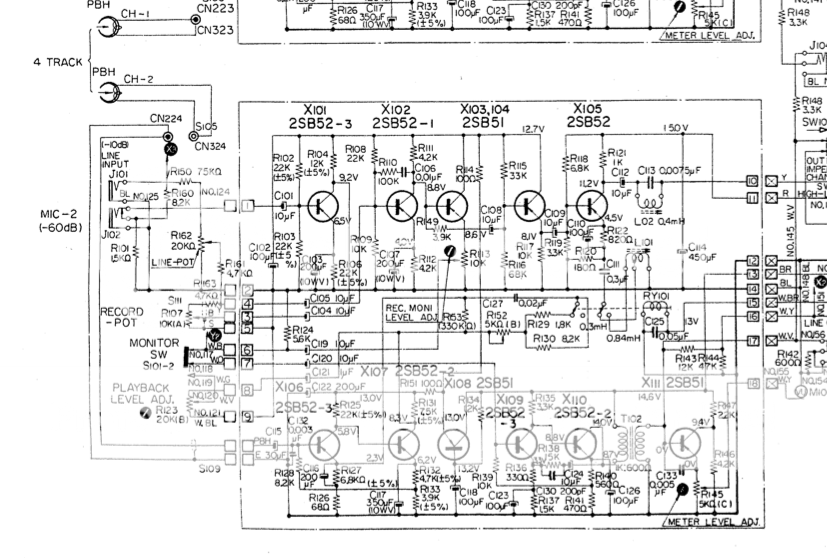A couple of things that I am looking into now is what kind of caps are best to use in vintage audio equipment, seems like they are cheap enough to buy the best, anyone have preferred brands?
It's going to depend some on what types and values of caps are in your unit--various mfr's model ranges feature certain values and can styles--and as a general rule, it's a good bet to go for low-impedance/ESR, high temp caps. For common electrolytics I personally like Panasonic, especially the FR/FM/FC ranges (I also have been using a lot of their SU bipolar caps in my console re-cap). Nichicon also very good caps. If you have lots of axial-style caps in your unit, know that these are getting harder to find, usually temperature rated for 85C rather than 105C+, and are always a little more expensive; you can either pay a little more and get them (Nichicon and Vishay are probably what you'll find, both decent quality), or you can replace with radials with one lead stretched across the axial span (slip a little heatshrink tubing over the long lead if it's crossing traces or other electronics). I'm not sure about the cans you'll find in your particular unit, particularly in the power supply section you may find screw-ins or who knows what.
On a side note, often if Mouser doesn't have something, Digikey will and vice-versa.
That all being said, there's certainly no guarantee that re-capping will solve your particular problem, but it sure won't hurt anything so long as you're careful and don't damage traces. 30 years on, caps do go out of spec and eventually short--and new caps will definitely exceed the performance of the originals when they were new, much less now.
Still, I would solve the acute problems you're experiencing first before flogging all new caps in the entire machine. Your problem could be something as simple as an old, cracked solder joint or a dirty pot--who knows!


